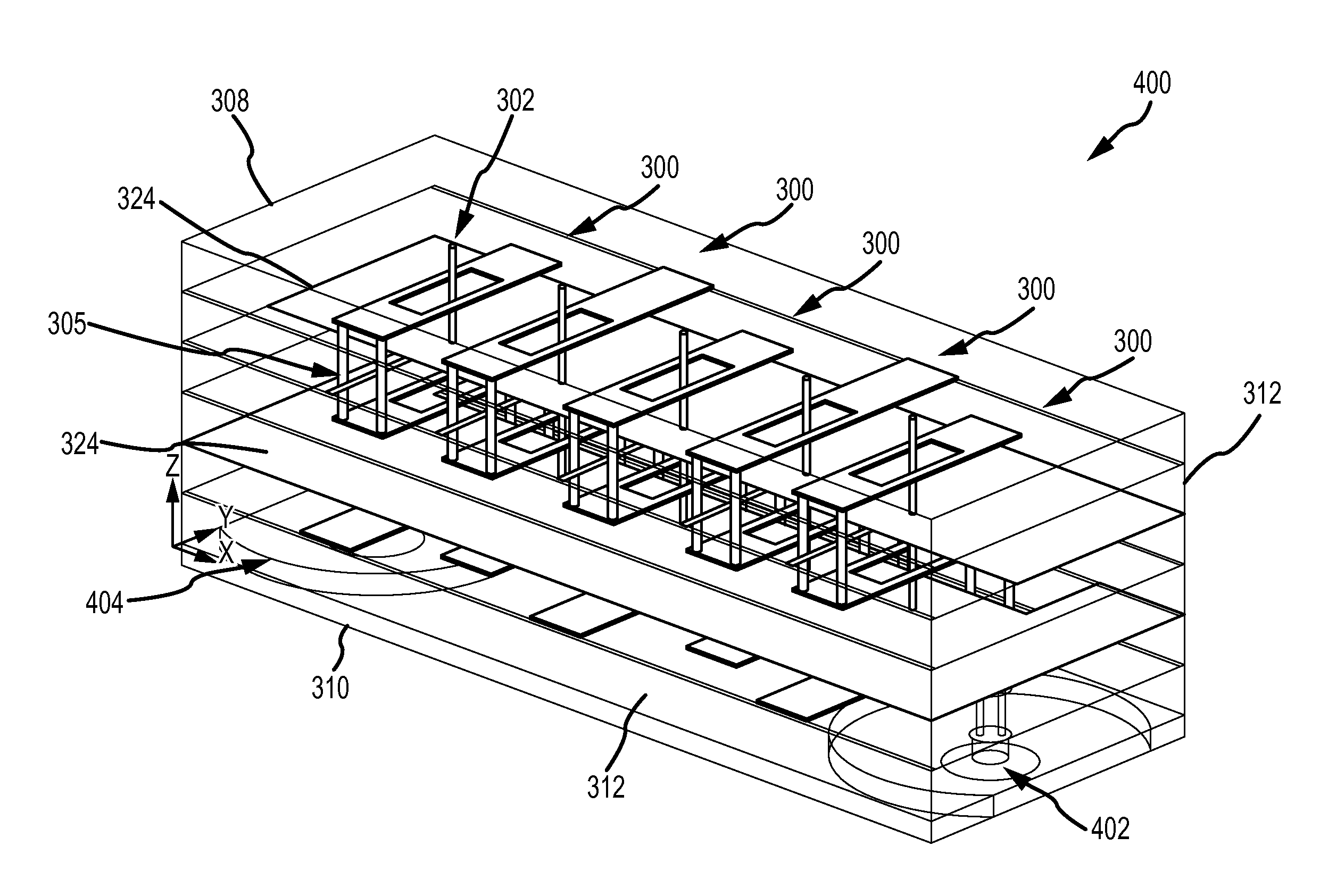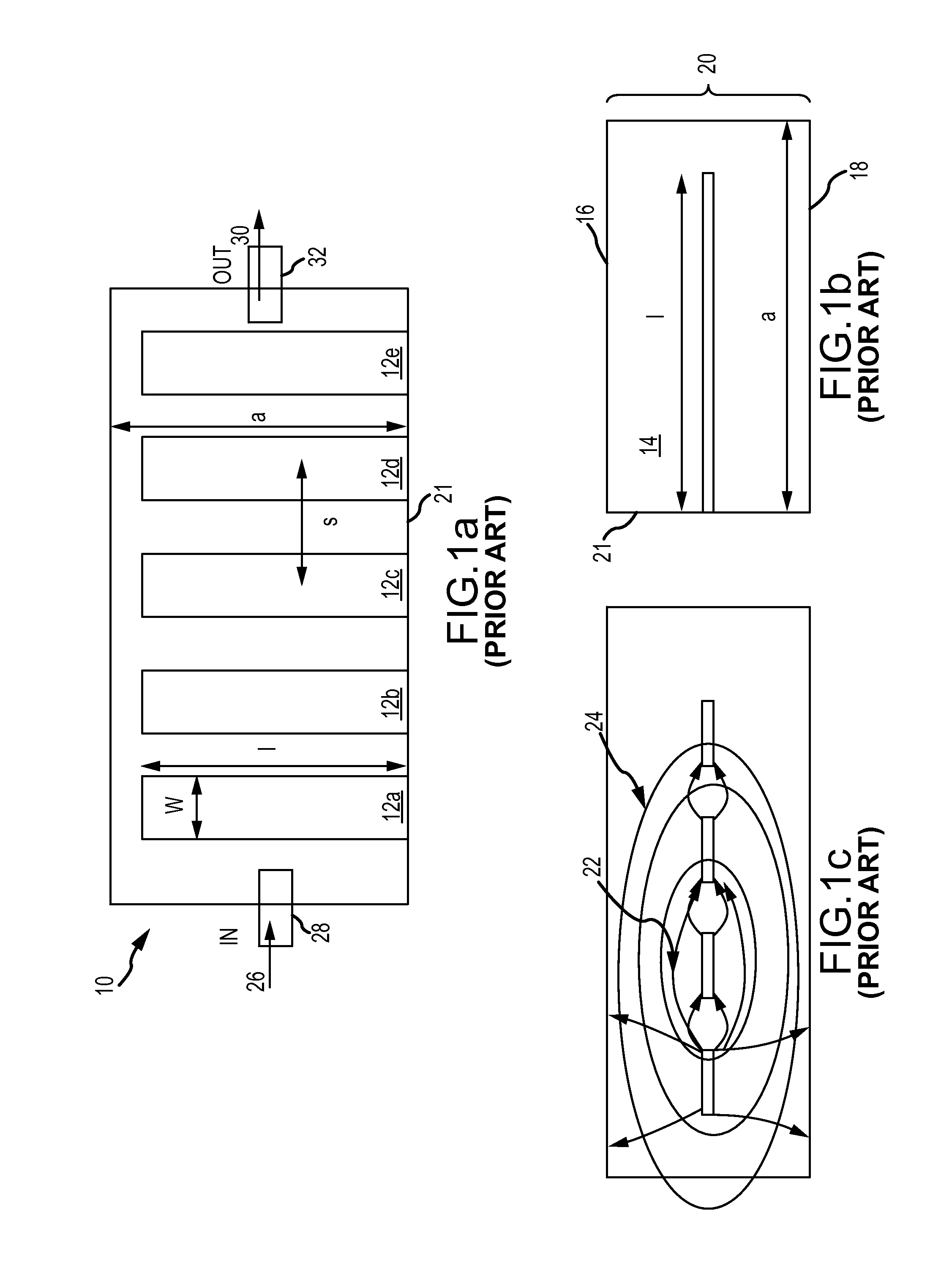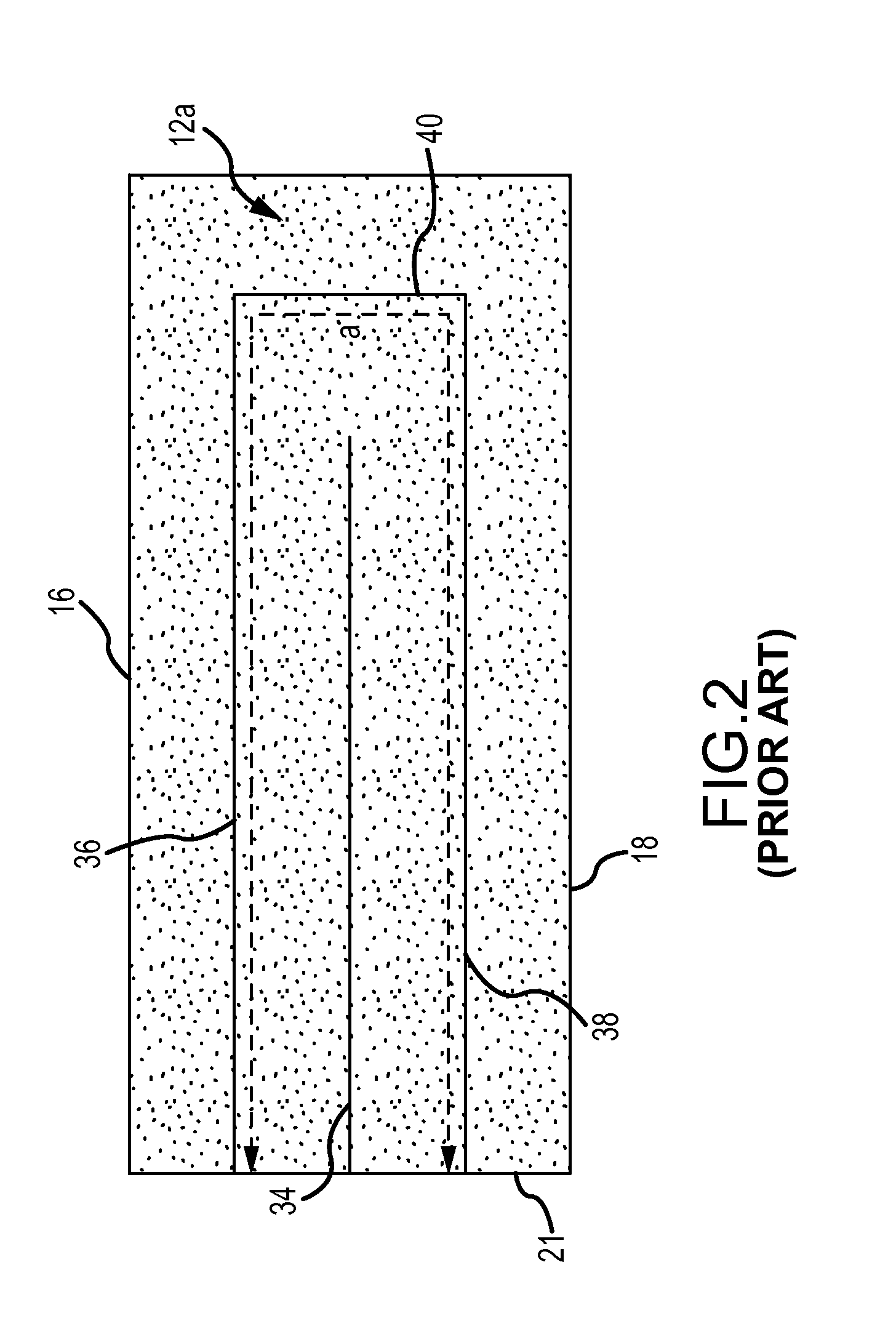Ground structures in resonators for planar and folded distributed electromagnetic wave filters
a distributed electromagnetic wave filter and ground structure technology, applied in waveguides, basic electric elements, waveguide type devices, etc., to achieve the effect of reducing interference with current, narrowing the effective cavity width, and increasing the attenuation of wave propagation
- Summary
- Abstract
- Description
- Claims
- Application Information
AI Technical Summary
Benefits of technology
Problems solved by technology
Method used
Image
Examples
Embodiment Construction
[0029]The present invention describes distributed electromagnetic wave filters with reduced coupling between non-adjacent resonators and reduced wave propagation through the waveguide structure. This is accomplished by forming one or more holes in one or more of the resonators (planar or folded) and by passing a conductive structure through each hole normal to the resonator. The conductive structures (vertical vias or horizontal strips) are preferably grounded, either by connection to one or more ground planes, capacitive coupling to a ground plane or by creation of a virtual ground. The holes are spaced apart from the edges of the resonator so as to minimize any interference with the current and fields concentrated at the edges of each resonator. These conductive structures narrow the effective cavity width “aeff” for the waveguide as a whole and between non-adjacent resonators without affecting the cavity width “a” between adjacent resonators. Consequently the conductive structure...
PUM
 Login to View More
Login to View More Abstract
Description
Claims
Application Information
 Login to View More
Login to View More - R&D
- Intellectual Property
- Life Sciences
- Materials
- Tech Scout
- Unparalleled Data Quality
- Higher Quality Content
- 60% Fewer Hallucinations
Browse by: Latest US Patents, China's latest patents, Technical Efficacy Thesaurus, Application Domain, Technology Topic, Popular Technical Reports.
© 2025 PatSnap. All rights reserved.Legal|Privacy policy|Modern Slavery Act Transparency Statement|Sitemap|About US| Contact US: help@patsnap.com



